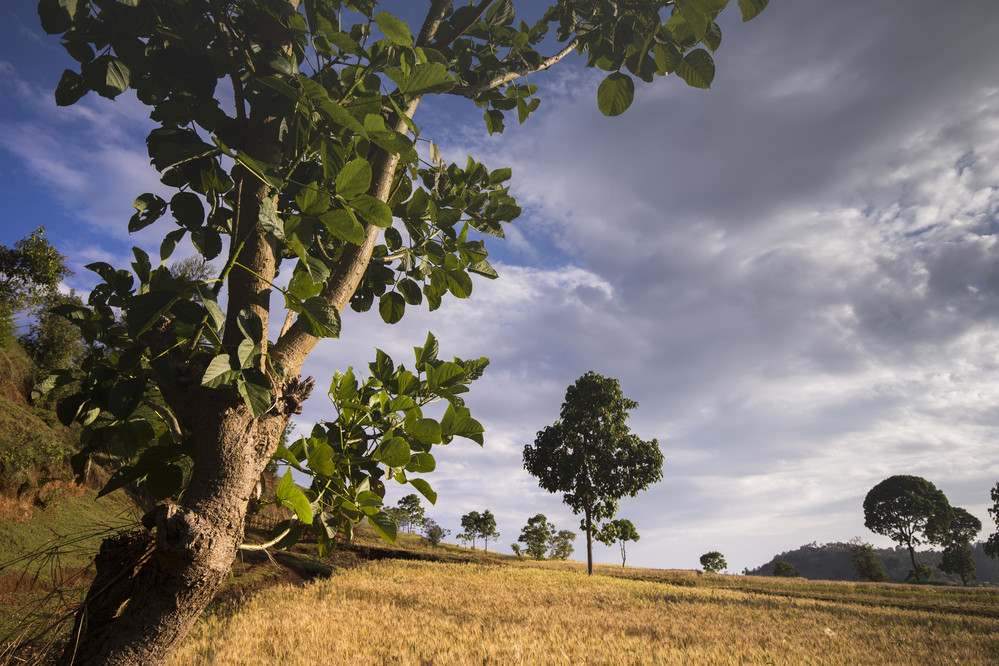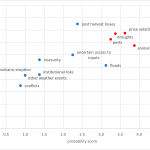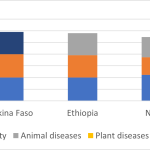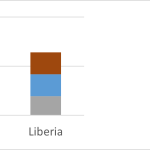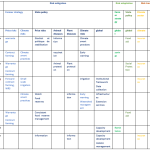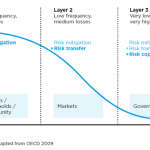Lessons learned from 9 agricultural risk assessment studies
After 7 years of working with 9 African countries on the basis of a standardized assessment of agricultural risks, PARM has established a strong empirical basis for original knowledge on risks in agriculture and their management. PARM has developed a rigorous methodology for an evaluation of each risk impacting agriculture based on 4 dimensions for each risk: the risk probability, the economic damage in case of an average shock, the economic damage in case of maximum shock, and the capacity of farmers and institutions to handle the risk. These 4 dimensions are used to establish a rational prioritisation of risks and identify appropriate risk management tools in which to invest. It provides governments, farmers organisations, private actors, with a global view on risks in agriculture which is a critical step toward efficient risk management. Dealing with each risk independently is likely to not produce a safe economic and agronomic environment that would favor investment.
We can draw a few important lessons from the synthesis of these national case studies.
Are crises more harmful than well-known risks?
At the two ends of our typology of risks, we find common risks, that are frequent but little harmful, and crises or catastrophic risks, that are rare but very harmful. It is seen as a common wisdom that farmers can deal with common risks by themselves with most accessible tools (remittances, diversification, agroecological practices, collective sales…), market-based tools can deal with intermediate risks (insurance, warrantage, contract farming…), and public institutions deal with crises (food aid, safety nets)[1].
But the results of our risk assessments tend to nuance this common wisdom. Although catastrophic risks like floods or locust damages have strong psychological and mediatic impacts, after a few months or a few years, economy recovers, and these catastrophes may not prevent economic growth of the agricultural sector. So it is true that national assistance is required when these events occur, but the economic stake is generally inferior to the repeated harm of common risks. When risks are frequent with moderate impacts like price volatility or drought pockets during the planting season, farmers are used to them but it does not mean that they are able to manage them or that the economic impact is low. On the contrary, we find that these common risks have a great disincentive effect on investment and productivity, precisely because farmers anticipate them, and their long run mitigation strategy is often a market withdrawal and disinvestment. These frequent risks are also the most difficult to insure against because insurance products for these risks are expensive, and this is one of the obstacles to private insurance adoption in Africa Parm studies consider alternative risk management tools in case of frequent risks like anticipatory measures of mitigation, or savings incentives (see table 1). Risk frequency is a key dimension of risk impact on investment.
Furthermore, it is striking how above-mentioned dichotomy between rare and extreme risks versus frequent and less impactful risks does not operate in Africa. The most frequent risks can also be the most impactful: droughts, price volatility, plant diseases and pests, and animal diseases. Figure 1 converts national values of risks frequency and damage into scores (0 to 5) and averages them for the 8 countries for which data are comparable (Burkina Faso, Cabo Verde, Niger, Senegal, Ethiopia, Liberia, Uganda, and Cameroon).
- Fig 1. Location of major risks on the frequency x damage chart
Risk profiles under semi-arid latitudes and under sub-humid latitudes
In semi-arid areas, drought risks and price volatility appear to be the main structural risks, harmful in most countries, disincentive for investments, difficult to tackle, and probably rising in most of them. Drought frequency seems to be increasing with climate change and the impact of price risk increases when agriculture gets more commercial. Animal disease is also a major risk in the Sahel and in similar latitudes in East Africa. New risks and crises like those due to insecurity are also considered as major risks in Burkina Faso, leading to migration and farm abandonments.
- Fig 2. Cumulated PARM scores (from 0 to 5) of the three main risks per country under semi-arid latitudes
In sub-humid zones, price volatility remains a structural risk, associated with plant disease and post harvest losses.
- Fig 3. Cumulated PARM scores (from 0 to 5) of the three main risks per country under Sudanian latitudes
Risk management caveats and strategies
The most adapted strategies to manage these risks depend on the risks themselves, on the efficiency of existing and potential strategies to handle risks, and on national authorities preferences for some approaches. We can broadly distinguish three types of risk management strategies, for which the cited examples indicate the types of tools that governments have considered as priorities after PARM’s risk assessments:
- Risk mitigation, that supposes an anticipation and preparation to limit the risk effects
- Farmers level mitigation: warrantage in Burkina Faso, Niger and Cameroon, contract farming in Niger, Ethiopia and Cameroon, agroecology climate smart practices in Cabo Verde, Liberia, etc.
- Public mitigation: early warning in Liberia, vaccination in Cabo Verde, plant protection programs in Cameroon, irrigation in Ethiopia, capacity development in Uganda…
- Adaptation
- Farmers’ level adaptation: remittances in Senegal
- Public support to adaptation: food aid in Niger or Burkina Faso
- Risk transfer
- Private: climate insurance in Burkina Faso, Ethiopia or Cameroon
- Public support to risk transfer: subsidies to climate insurance in Burkina Faso, Uganda…
- Table 1: synthesis of the risk management tools and strategies to be developed in Africa
Note: this table does not quote all risk management tools that risk assessment requires but highlights only the most specific one of each study. The capacity development dimension in particular could be considered as transversal to all studies.
Two take away messages
- Beware of well known risks
As developed in this brief, well known risks may be the most harmful because they favour market withdrawal, discourage investments, and they may require a specific and ambitious strategy
- Prefer risk mitigation
Risk mitigation (or even risk prevention when possible) is the most desirable option of risk management because it clarifies the long-term profit perspective for potential investors. This requires knowledge but also a desire to anticipate and give importance to the future.
- Design a holistic risk management strategy
A consistent strategy of risk management of the main risks taken altogether is necessary for a real decrease of the level of risks. Reducing the drought risk only if price risk remains high will not secure farmers profit and push them to invest in long-term productive assets. And reducing price volatility if plant diseases remain high will not encourage investments either. Therefore, decentralised projects that jeopardize one aspect of risk management on national territories may lead to a poor impact on risk reduction and agricultural investment. It is fundamental to provide farmers with a holistic risk protection against price risk, climate risks, plant diseases and pests risks, and security all together, including specific risks impacting women and youth, and risks for which women and youth can be the solutions. And it is also important to handle downstream risks that prevent processors to build a bridge between farmers and final demand. This is what PARM works at.
[1] OECD 2009, see annex
Annex
- Fig 4. OECD proposals on risk management layers
